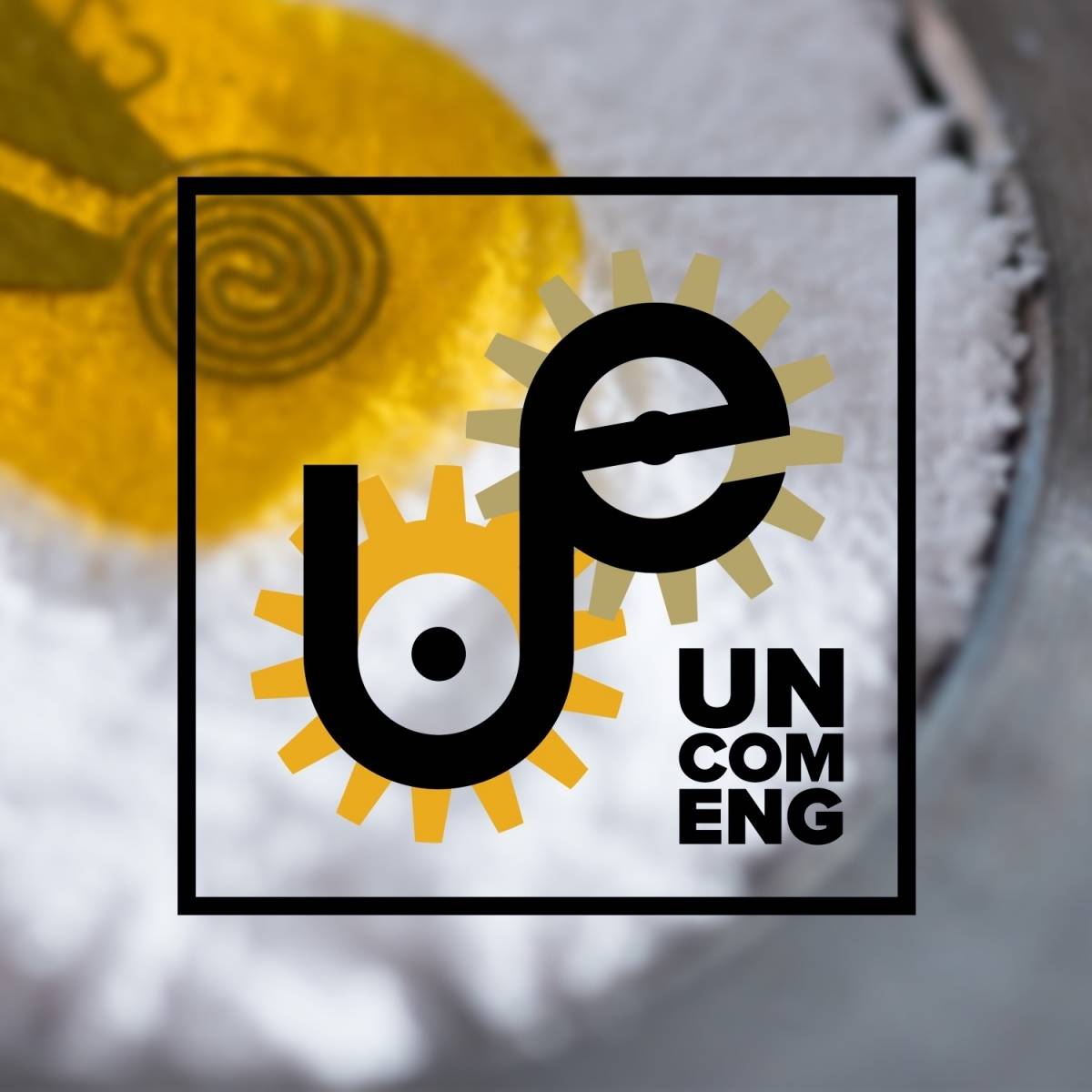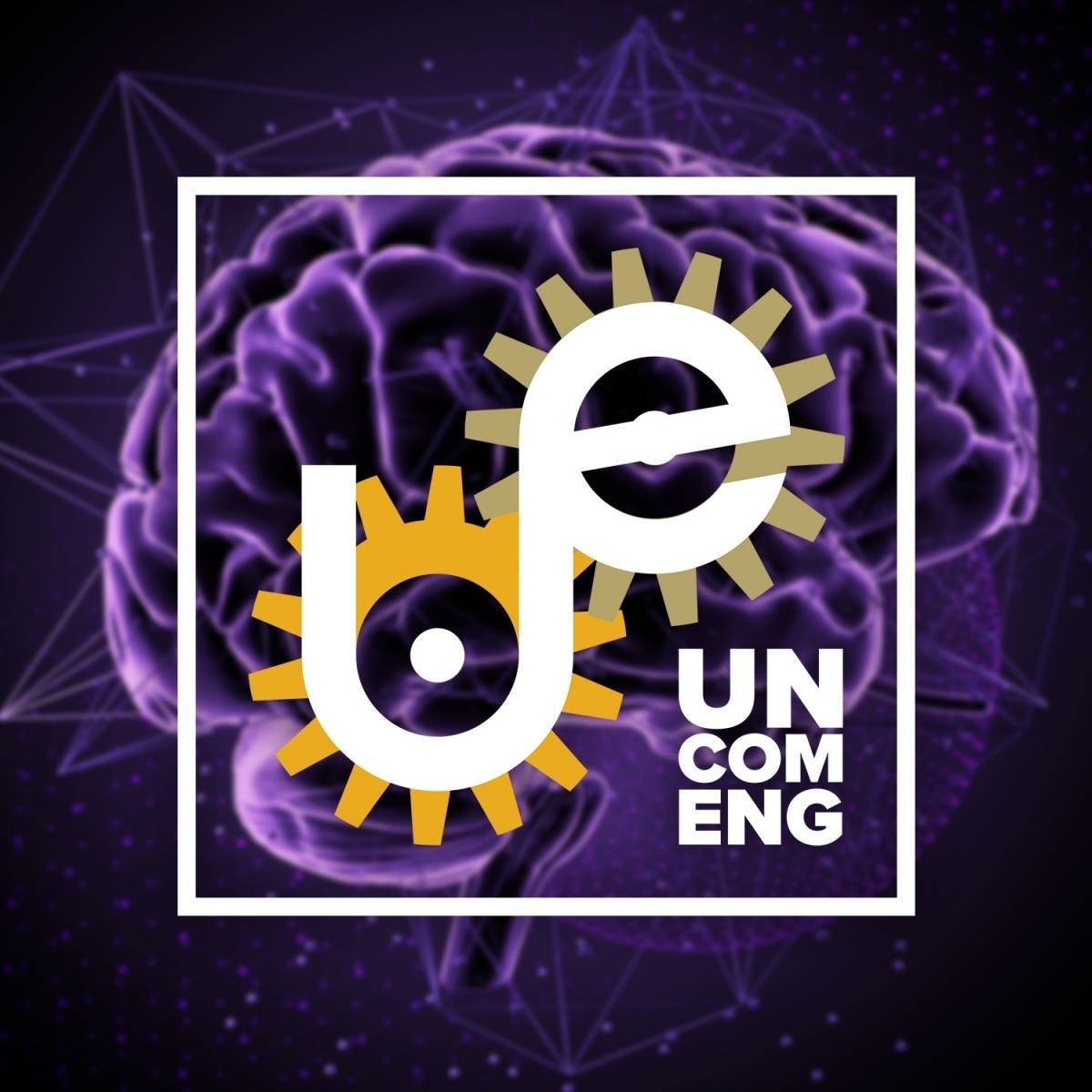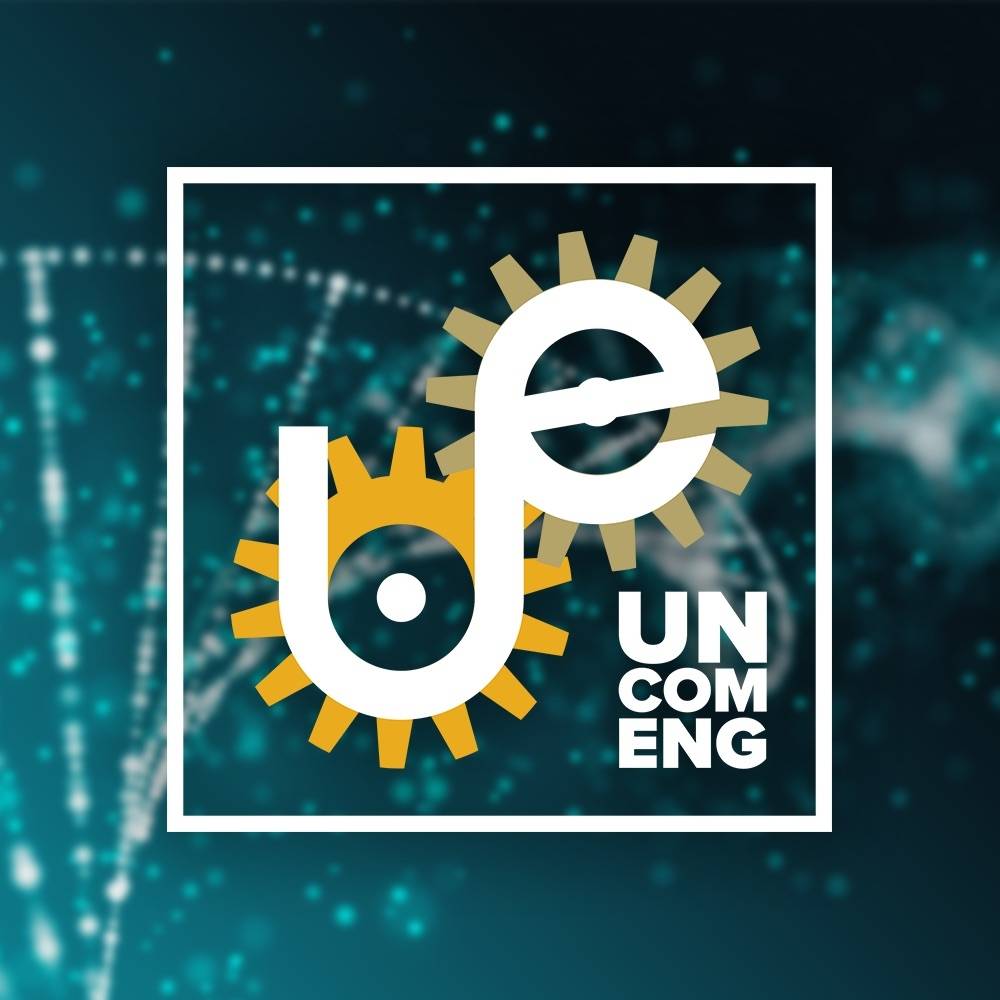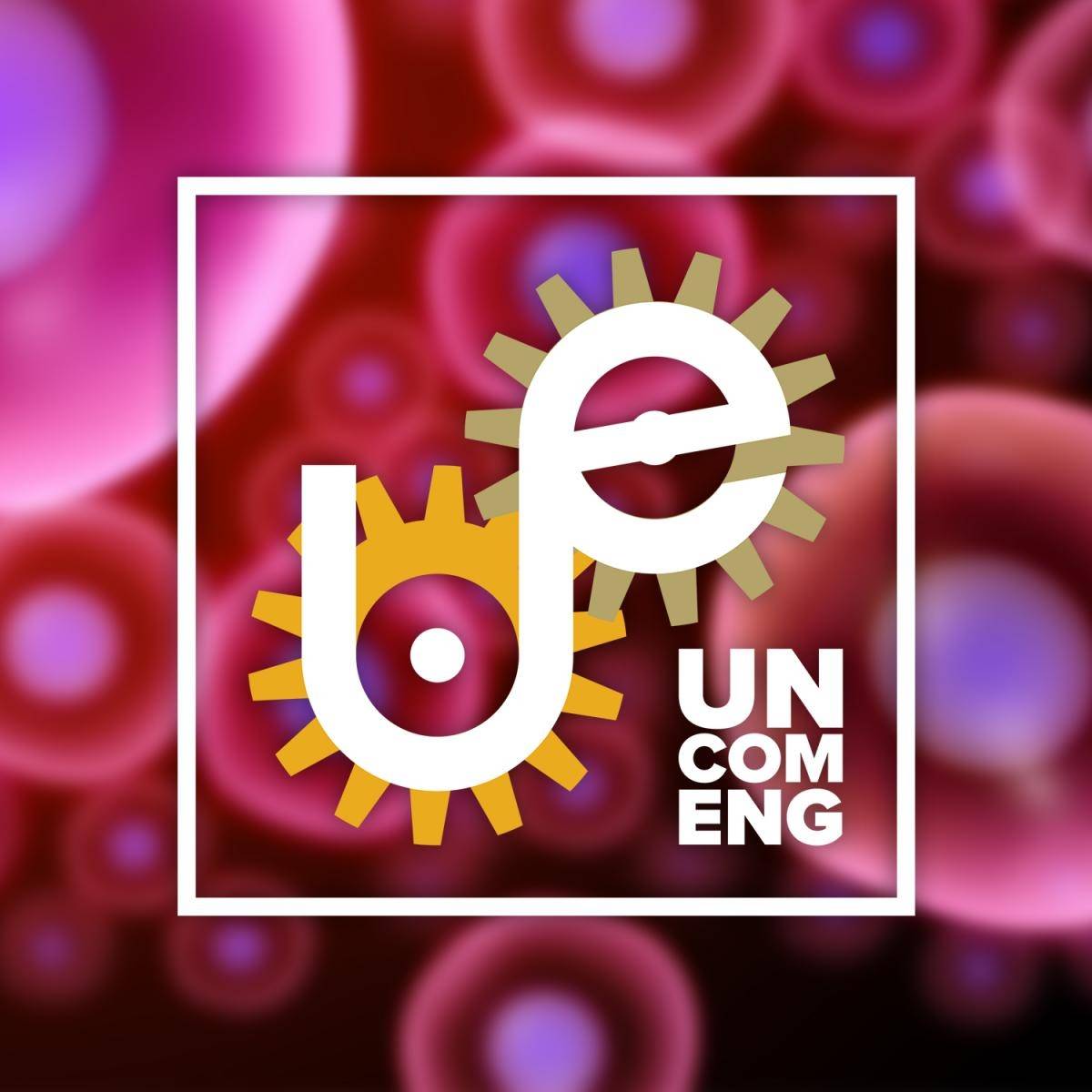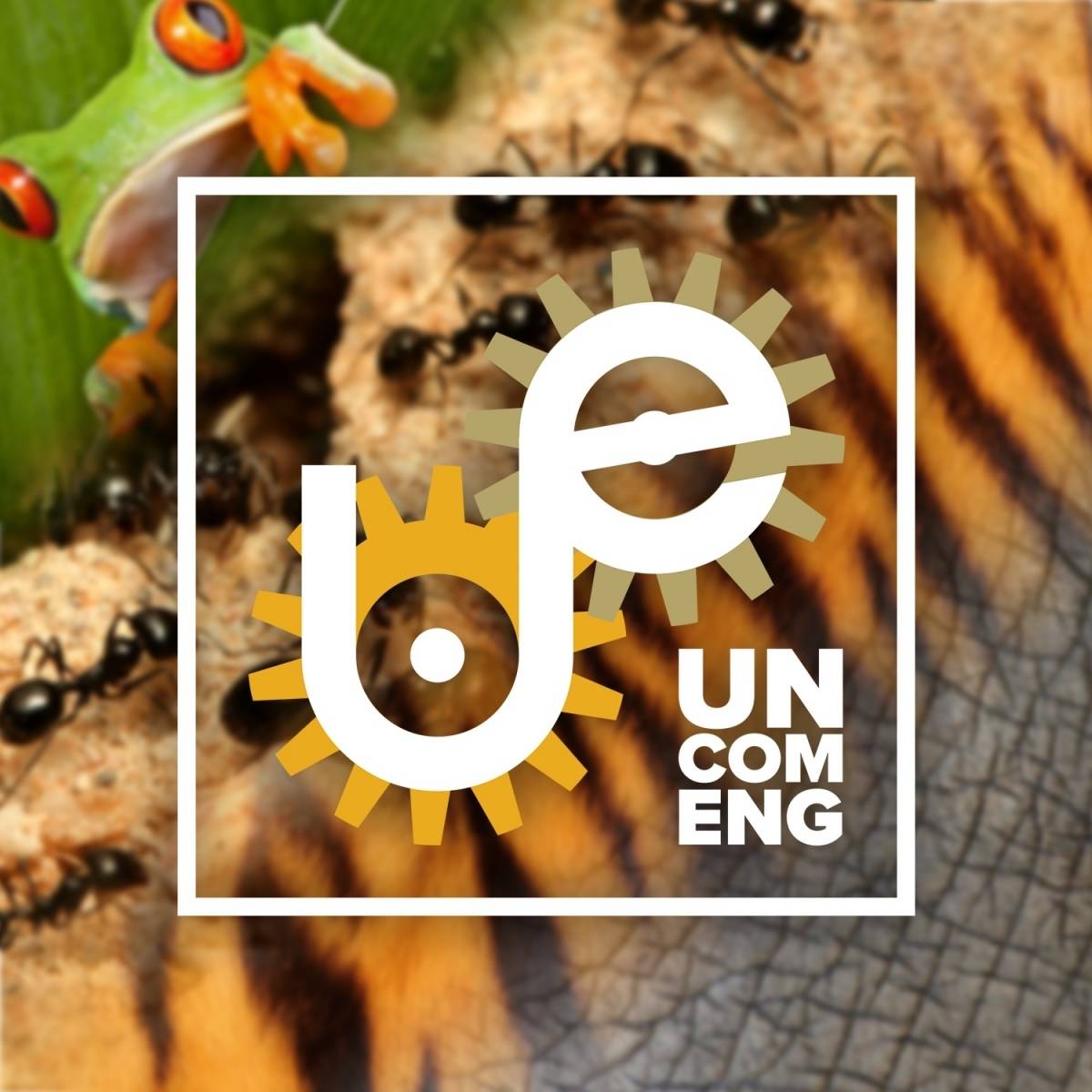Steve W. McLaughlin

Baratunde Cola
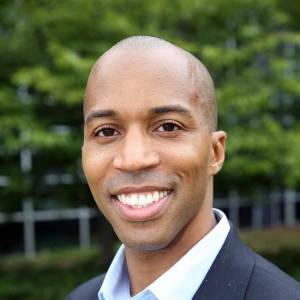
Audio
Audio & Captions
Transcript
[Georgia Tech whistle]
[“Ramblin’ Wreck from Georgia Tech”]
>> I’m Steve McLaughlin, dean of the Georgia Tech College of Engineering, and this is The Uncommon Engineer.
[assorted radio clips]
Steve McLaughlin: We’ve all experienced our cellphones getting too hot or our laptops becoming noisy as they try to cool off. In fact, computer centers across the nation do the same thing, consuming almost 10 percent of the total amount of electricity generated in the US just to cover the air conditioning costs.
Welcome to another episode of The Uncommon Engineer podcast. I’m Steve McLaughlin, dean of the Georgia Tech College of Engineering. The Uncommon Engineer discusses how Georgia Tech engineers make a difference in our world, in our daily lives, and in ways you might not expect.
Our guest today is Dr. Bara Cola. He’s a professor in the Woodruff School of Mechanical Engineering here at Georgia Tech and he’s focused on developing materials that can regulate heat flow, potentially having a significant impact on the consumer electronics industry. Welcome to the show, Bara.
Dr. Bara Cola: Thank you, Steve.
Steve McLaughlin: So you know, we said in the intro your research area is in something called thermal science in nanotechnology, and I think a lot of our listeners aren’t really going to be familiar with what thermal science is. And you know, and even me, you know, I would say, until recently, didn’t really appreciate the importance of heat and the heat that’s given off by devices and what we can do with that heat, how we can manage it, and how important it is for certain products and systems to work. And I think that that’s your specialty, and so can you say a little bit, you know, about what thermal science is all about and where you fit in and really how important and exciting it can be?
Dr. Bara Cola: Sure. It’s very exciting. I think most people, whether they know the details about it or not Steve, everybody’s touched by thermal science. The food they cook, the sun they feel, the bath they take, the house that’s warm. So these are things that people have gotten so familiar with that I feel like they just forgot about it. And so what we do in my lab is we remind people of how powerful those things they forgot about are by bringing out new features.
And so we, in particular, focus on electronics. Last year there was about 12 billion silicon wafers shipped globally. I tell people when they pick up their cellphone and they make a call or a text, they’re running ten computers at the same time and they don’t even know it.
All of these things generate so much heat and require so much electricity, 10 percent or more of the power produced in the United States as a fact, that figuring out ways to manage that heat better has almost become one of the central problems for humanity. So it’s a big thing. It’s exciting, too. I mean, it’s materials that are new, are part of the solution to that. But you know, it’s so ubiquitous yet it’s so hidden.
Data centers, the cloud, people—normal people, when they say the cloud, it doesn’t really have a physical meaning, but there are these huge warehouses with computers. And if you walk into them, it’s like being in a sauna. They’re so hot unless they dump a lot of electricity to cooling it.
So just a fundamental principle of life, of thermodynamics, is that when anything does work, it’s inefficient, whether it be your teenage son or your car. And they produce heat as a byproduct. This is a byproduct. So I tell people all the time, this is a business that will be around forever, because everything you try to do to do work has a byproduct that heat is a part of and you have to do something with the heat. If you just let it all sit in your phone, your phone will get hot and blow up. If you let it all sit in a data center, the building will get too hot and people couldn’t be in there.
Steve McLaughlin: Let’s drill down a little bit to your specific research interests, because I think there’s some incredibly exciting things. I know it involves a startup company that’s also really exciting. So if you could share a little bit about, you know, how the nanotechnology comes in to play and what part of maybe some of the systems that we talked about, what your research is and how it fits in?
Dr. Bara Cola: Sure. So I’m a mechanical engineer by trade. I have a kind of pet peeve, because you stay in a hotel and it says the engineering room, right? We’re kind of far from that. We like to think of ourselves as engineers at the molecular level. So that’s really where the nanotechnology comes in, is that instead of taking gears and nuts and bolts and putting a box together, we can actually, through chemistry and understanding it, take atoms and molecules and put them together to affect different thermal properties. And so the reason that’s important, the computers that everybody relies on are already at the molecular scale. So if you’re going to have a way to get the heat out of them effectively so they operate more powerfully and effectively for what people like to use them for, then you have to be able to make the heat sink that small.
So that’s what I focus on. I focus on how do you take new materials that have really excellent thermal conduction properties and manipulate them at very small scales to touch very small things that are doing work to get the heat out.
Steve McLaughlin: You know, tell us kind of from beginning to end, you know, what Carbice is all about, how big it is, where you stand, what your products are, what your challenges are. This whole area of thermal management is not accessible to people, but this is really important stuff, and I think there’s huge promise for what it is you guys are doing. So it’d be great to hear about the company.
Dr. Bara Cola: Sure. Carbice Corporation is a venture-backed company that brings the new standard of thermal materials to the global industrial and electronics market. Most of the most profitable famous companies of the world are not really famous. They make products that no one will ever hear about and they make things that make other people’s products better. That’s the place that Carbice lives in. Our goal is to make our customers famous, because there’s a lot of IP wrapped up around what we do.
So we make a film. Basically, it’s black-coated aluminum foil and it has what we call the Carbice carbon. It’s a composite of aligned carbon nanotube structure with aluminum. And that material gets converted into parts and products that help electronics manage their heat better, more cost effectively, and things like that.
And so the company has—it’s grown tremendously in the past couple of years. We’re at 13 people. We have—we’re at the pilot production scale facility that does about 300,00 of our units a year, which is about a square inch.
2019 is a huge year for us. Most people may not recognize, but in 2020, the world will go through—will actualize or realize one of the largest shifts in technology that’s ever happened. There are things like 5G, more digital light, these different types of embedded technologies that have been in development for a few years, because the type of customers a company like Carbice has spend three years developing their new products. These things will start to become visible in 2020, and that’s where we like to be. We’re excited about our customers and how they, frankly, change the future, how they provide internet to the world or, you know, how they provide servers and things like that.
So it’s an Atlanta-based company. We do our manufacturing in Atlanta. We’re part of the Advanced Technology Development Center. We have had the pleasure of winning Atlanta’s first ever Startup Exchange with the city of Toulouse, our sister city. I got to go Toulouse for two weeks back in 2016, and I’ve been there about six times since. It’s like my second home now. Toulouse is the home of—Toulouse is the birthplace of aero business. The first air mail was from Toulouse to North Africa. It’s the home of Airbus. So these are the markets that Carbice serves today. We are the leader in thermal materials for the aerospace satellite market. We are becoming a leader in semiconductor tests through partnerships that we’re getting ready to finalize this year.
Next up for us will be to take over graphic server, 5G, all these other emerging high-power density technologies that, frankly, require more scale of production than we have right now, but that’s kind of the trajectory that the company is on.
Steve McLaughlin: You know, I think so many of our listeners, you know, think of, you know, engineers as they’re good in math and science and they work on widgets and, you know, you’ve moved in to creating a company and all of the challenges connected to starting a company.
Can you say a little bit about… Why not just keep doing your research in your lab and, you know, working with students and teaching classes? And why start a company and how did that all come about?
Dr. Bara Cola: Impact. That’s the one word. I’ve had so many experiences in my educational journey, starting at Vanderbilt as an undergrad in mechanical engineering. We had a guest speaker once and they made a statement that stuck with me that a large percentage of the American CEOs are mechanical engineers. And I said well, we must be doing more than just building cars.
And then when I went to get a PhD at Purdue, one of the most successful chemistry professors there was receiving an institute award. And his talk mentioned how he started his career and he was publishing in science in the top journals, and a couple years later, he was just going through this, I guess, emotional or self-discovery again, and he was in the library picking out one of his papers, and he saw that the pages were turning yellow. It looked like no one was reading it, and then he became an entrepreneur and had had a series of successful companies. Those type of stories resonated because the impact that I want as a contributor to society is to affect people, not necessarily papers. And there’s kind of an implicit assumption that people will read your papers and do things with them, which happens, but I think you have more control over that journey by being an entrepreneur, and I think that’s what pulled me out.
Steve McLaughlin: And I know that you’re also really active in—so not only your research, you know, working on the startup company, but then kind of, for lack of a better term, giving back in a whole bunch of different ways, including helping students understand what entrepreneurship is and how to go about it.
Can you say a little bit about—and I think you just taught one of the courses on, you know, educating our students on what entrepreneurship is all about. Maybe you could say a bit about that program and, again… You have so many things going on, and so why spend your time doing that?
Dr. Bara Cola: [laughing]
Why add one more thing? I’m so fortunate to be at Georgia Tech, to have colleagues like yourself that start innovative things like Create-X. I think that nothing gives me more pleasure than to be around the students at Georgia Tech. I like our grad students, but I think our undergrads in particular are the best. I did a sabbatical for a year at MIT so I have a baseline.
I think that to be able to help a student gain entrepreneurial confidence is to help them gain human confidence. I think there’s nothing greater to be able to do for someone as a mentor.
Steve McLaughlin: And so what other kinds of things, you know, because—I think there’s a lot of people out there, you know, like hey, I might want to start a company, I’m not really sure what it is I like to do, but it sounds fun and exciting, maybe I could be the next Mark Zuckerberg. You know, what do you—because I think we have a lot of students like that but don’t know where to start. Don’t know—and so I think that that’s the class that you taught is really at that very beginning. How to get started and what advice would you give students on like, hey, this is—if you really think that that’s what your future is, how do you get started?
Dr. Bara Cola: So startup lab was the course, and I really enjoyed that, because I got to actually see for a full semester the transition of mindset among these students. And if you want to get started, you really have to just—it’s hard to start a business that you are not authentically passionate about with some insight or capability that’s unique. And so it takes time to find that match.
And I think for young people it can be more challenging, because your life experience is limited. So you have to figure out a way to accelerate your life experience. Part of what we did in the startup lab course was just to send students out to talk to people. I think every group last semester had over 200 interviews. That’s unique for an undergrad engineering student, to go out and talk to 200 strangers. That’s a part of it. So if you want to do something, even if you think you might, I think as a general human good to just go out and talk to more people to ask them how their life is.
Steve McLaughlin: Yeah, and what are the problems that you can help solve?
Dr. Bara Cola: Yeah, what’s going on? You know, what are the challenges, and how can you put your Georgia Tech education to good use to do something that might make them have a better day or better life?
Steve McLaughlin: One of the things that we talk about on The Uncommon Engineer is really how you got started. So you just said you were the youngest of three and, you know, how did you get started in—as engineering being your path? You know, where did that fire or spark happen? Was it young, was it later? Where—
Dr. Bara Cola: Very young. I cheated. My father is a mechanical engineer and he’s extremely inspirational because he didn’t go to college until late. My mother’s from Pensacola. He’s from the Bronx. I tell people he lived a different life before he went to college. He left—he graduated from college at City College and left New York when he was 30, and so he just was a guy that kind of stumbled into engineering. He tells me that the way he chose engineering was he went into the career catalog and he just looked at what paid the most money. He said, “I don’t like blood. I’m not going to be a doctor. Lawyer, I’m not sure about that. Oh, this engineering thing, I’ll go ahead and try that.”
I found that story so intriguing as a child that I think it combined with my natural curiosity that just from an early age I kind of knew that I would be doing something inventive. But I knew that I wanted to be in business and be inventive, and I think that’s why I ended up taking the track that I took through engineering.
I play sports, too. I think that people that, you know, look at my bio, you know, there’s a lot of information about me playing college football and these things. And frankly, I would not have gone to grad school without football being the reason that I did that. But I think that that competitiveness that is in sports and business has always been a part of me. So then when you put that with the curiosity, be the person who has those interesting questions or conversations in the football locker room about the Ice Age that no one really wants to be involved in. They’re like, you know, “You’re a nerd.” But you blend those two things together, you actually work really well as the uncommon professor at Georgia Tech that balances being in a startup and doing research and teaching and all these different things. I think that that’s the tension, I guess, that’s always been in me.
Steve McLaughlin: And you’re in mechanical engineering, and so can you talk about how the kinds of students or the students that come in your lab and what would you say to junior high or high school kids that are thinking about—you know, what kind of skills would it take to get and do the kinds of things you do?
Dr. Bara Cola: So I have a courtesy in material science, so I do have some materials students and that’s the blend. But I think in general, most of my students are pretty hands-on. So they have to be people that kind of like building things. And it may sound like, well, how do you build things with atoms since your hands are so big? But it’s really using equipment and tools that do that for you. So these students, they don’t necessarily have to be strong in chemistry and these other things. Those are things that we learn in the process. I think they have to be willing to think big, though. I think that that’s where the alignment has to happen, that they have to be willing to think big and they have to be willing to be patient and kind of trust the process, because most of the things that we do take a long time to work out. We just decided just philosophically that we’re going to work on stuff that may not work out, and it’s going to be big and hard, and we’ve got to understand how to peel learning off in that process.
So I look for students that display that mindset, that they display kind of just unabashed curiosity, high energy towards that curiosity, and grit. I mean, just willingness—I look for that in people’s resumes, that they’ve maybe gone through a challenge or taken some experience that was unusual and I kind of dig and ask about that.
Steve McLaughlin: I think one of the things that you work on is this thing called the optical rectenna. I know it relates, I believe, to solar energy and solar panels and solar cells. I think, you know, people tend to think of that as, you know, where we are today. You know, how do we harvest the sun’s energy and how do we turn it in to electricity? But you talked about the optical rectenna, and can you say a little bit about what it is and why it holds so much promise?
Dr. Bara Cola: Sure. Most—so the current solar technology, if you think about the sun as if it were throwing baseballs at Earth, and the solar sails kind of are a catcher’s mitt and they kind of catch the baseballs and split it into electricity.
The optical rectenna works completely differently. It takes the sun’s electromagnetic energy, like a radio wave. And instead of having a catcher’s mitt catching a ball or a particle, you have an antenna that catches the wave by coupling to it.
And so that’s attractive, because theoretically, it could be twice as efficient and broadband. So when you capture the sun with the baseball approach, that ball has to come in with a velocity that exceeds a certain value. If it’s lower, the energy is just wasted as heat. With a rectenna, it can capture all the waves. There’s a lot of practical things that have to be done and engineered to make that true, but theoretically, it can capture everything.
By default, it can be more efficient in the same setting. It can be more efficient capturing energy coming from different angles. So it’s pretty exciting technology. Practically, it’s probably going to be most useful in the near term for harvesting those low-energy baseballs, the things that the current solar sails can’t capture, but they’re out there, the heat, the near IR as a tandem technology. And I think that’s going to be really powerful for the energy equation when we get there.
Steve McLaughlin: Well, it’s been really great having you here today, Bara. You know, I think you do so many things for Georgia Tech and you’ve accomplished so much. I think we’re really, really fortunate to have you here on our faculty contributing in a whole bunch of different ways. So thank you for everything you do. Thanks for coming on The Uncommon Engineer and thanks for everything you do for Georgia Tech.
Dr. Bara Cola: Thank you, Steve. It’s quite an honor for me to be a fighting Ramblin’ Wreck of an engineer and just to be on the show. I’ve enjoyed speaking with you today and look forward to maybe doing it again.
[instrumental music]
[assorted radido clips]
[“Ramblin’ Wreck from Georgia Tech”]
Geekout
Audio & Captions
Transcript
[music]
Steve McLaughlin: I’m Steve McLaughlin, dean of the Georgia Tech College of Engineering and this is The Uncommon Engineer.
[radio station clips]
[“Ramblin’ Wreck from Georgia Tech”]
Steve McLaughlin: Sounds incredibly complex. It sounds like—students you need to have abilities that span—I’m really geeking out here.
Maybe you could say a little bit about the carbon nanotubes and then how those fit in to your research?
Male Speaker: I’m a carbon nanotube fanatic, if there ever was one. It’s the reason I went to grad school. So the carbon nanotube—I’m from Pensacola, Florida, and I grew up—I tell people I could run to the Alabama border. So it’s not Miami, it’s lower Alabama. So you get very familiar with chicken wire. Right? So if you think of chicken wire, the honeycomb structure, that’s what the atomic structure of a carbon nanotube looks like rolled up like a cylinder. And it’s important because if—a very simple way for just people in public to think about what makes something a good conductor of heat, the lighter the atoms are and the stronger the bonds, the more efficiently the energy transfers. Carbon-carbon bond is strong. We know that’s one of the strongest and then the carbon atom is light. So this carbon nanotube is important because it’s frankly the end game for how fast heat will transfer in a material and researchers have just been at it for decades now. The material was first discovered in 1991, and researchers have been trying to take advantage of its properties to do things not just in heat. The material is 10 times stronger than steel at 10 times smaller diameter. So it’s strong, it’s thermally conductive, it’s electrically conductive. For us, and really kind of in the DNA of what it means to be a professor doing applied research at Georgia Tech we focused on tackling those challenges to making that material practical because no matter what if you want to build something at the atomic scale, everything eventually has to interface at the scale of humans because you’re selling it to people. So you have to figure out ways to build systems around these small things and that’s really kind of the exciting thing behind nanotechnology, specifically and carbon nanotubes but also what we do in the NES lab at Georgia Tech.
Steve McLaughlin: And so if I had a carbon nanotube in my hand, I touched it against something that was hot, you’re saying that the rate at which, you know, the heat would move into the carbon—you know, that the heat would be absorbed by the carbon nanotube, it itself is either much more efficient than anything else we’ve got but it makes some really good tradeoffs on how it absorbs heat. I think I have that right?
Male Speaker: If you had it as a straw you could think of—so the carbon nanotube is about 10,000 times smaller in diameter than the human hair, but the record is the order of an inch long that you can grow a single one. So you could take an inch nanotube and the heat from your fingers, if you just took it like a straw and put it on a piece of ice, would almost instantaneously melt that ice where it touches.
Steve McLaughlin: And so, then the idea—and so the way that you characterize, you know, it’s not just heat at a big scale; you’ve got to start heat at the very smallest scale. You know the individual devices, you know, in a circuit on a chip in, you know—in a computer or something like that. And so how do the—do you envision kind of those nanotubes as sitting, you know, adjacent to or on those circuits in a chip or how do you—how do you think about integrating these carbon nanotubes say into a current system?
Male Speaker: That’s a really good question, Steve, because when I started as a researcher as a student a lot of people were talking about ways to integrate by fabricating these materials on to existing computer chips and things like that, but there are always these tradeoffs. And so these materials require high temperature to be grown with good properties. So to some degree you have to figure out how to solve that puzzle and that’s really where Carb-Ice, my startup company, comes in is we figured out a way to deliver the material to applications, whether computer chips or other things, without having to fabricate them directly there and we do it really through an adhesive technology that we invented at Georgia Tech and licensed to the company that allows you to, at the molecular scale, bond an individual nanotube in an array of trillions of them to a surface and really to do it over multiple surfaces. So that was actually the lightbulb if you will that went off in my mind as a faculty member that we had solved a really big problem that was holding up the commercialization of that technology,
Steve McLaughlin: And so where—it just seems like there’s such a huge number of ways. So given how you can kind of stick these carbon nanotubes on other things to—that makes tons and tons of sense that you could get the heat off of them quicker and more efficient. But it seems like it would apply to tons of different things and so I’m really curious about where you’re applying it, what Carb-Ice is—where do they see this—the first and best applications for it?
Male Speaker: The first thing to know about commercialization of a materials company is everybody’s excited but nobody—everybody is also scared of it in a sense that it’s very risky for an Intel or Qualcomm or some big company to immediately take a new technology into their production fab. So you kind of start in steps and for our company we started with the commercial space market, with satellites. So telecom satellites, radio, internet, these things coming down from space now these are the places where a material like ours enables them to hit new standards of performance and, you know, they’re risk takers. Anyone that sends anything to space or goes to space is a risk taker. And so once people like that take on then you kind of take the next step and we use our product in the semiconductor fabrication facility. It doesn’t actually go into the final product because they’re not quite ready for that step yet but the tools that they use to qualify to do reliability tests, where they actually have to power up devices before they sell them, require water cooled heat syncs because they dissipate so much power, but you can imagine they can’t have a heat sync for every device they make. So they need heat syncs they can touch many devices and kind of come down and engage and disengage. So our material being that it’s so durable, these carbon nanotube-based technologies have a lot of strength that it can last millions of insertion cycles. So those are the two places you can find our technology today. In 2020 we’ll probably have some new technologies in consumer electronics those are emerging. It’s a process. So you know, to your point about the versatility of that application approach it really doesn’t even have to be heat dissipation. There’s so many applications in electrical connection, in mechanical energy absorption that take advantage of the same platform and kind of what you want to do and I think the best sweet spot to be in is to kind of start with a material platform that’s universal and then focus in on one particular aspect that’s interesting like we did with thermal just to get it out there.
[music]
Steve McLaughlin: I’m going to change gears a little bit and brag on your behalf about one of the awards. You’ve received so many awards for the research that you’ve done and things and one of the awards that you received in the last year or two is something called the Waterman Award which I think most people characterize as the top award in science and engineering for someone, you know, in the middle of their career, period, in the entire country and you were the winner of that. And so can you say a little bit about, you know, what that award is and what it means to you and then how you—you know, it’s a big deal. It’s not even—it’s bigger than a big deal and it must have had some impact on you personally, impact on your career and continued to guide you. So I’m curious about saying a little bit about that award and what it’s meant and where are you headed?
Male Speaker: It’s a big deal. I think it’s quite, you know, I want to say humbling but I think it actually drives a lot of perspective for me. I think that it’s not something that I thought of when I started my career and I think the perspective is that the way that I started my career—actually, you know, it was important when I went to the Waterman. I had my parents, my in-laws, my wife, my PhD advisor. It was a special time to kind of have everybody come up there and participate in that with me and when I gave my acceptance speech I kind of talked about the beginning of my career when really all I really wanted to do was to do something that was going to be impactful and that was kind of the focus. And I wanted it to be a challenge such that if I achieved it then it would be a significant thing, but if I didn’t I would learn a lot in the process. And so for everything to have actually worked out like I planned in a 3 month period when I really didn’t know what I was doing, gave perspective because it wasn’t easy. It took a lot of false starts and I reflected back on probably the five or six times that I wanted to give projects up that to actually have it work out like that was just a special thing and to be frank it was a special responsibility that I felt to do something really important with that honor to come back to Georgia Tech and try to—it comes with a million dollars. So for those listening it’s a lot of money, no overhead. It’s like a true million dollars and I think I set the record for being the Waterman award winner to spend his money the fastest.
[laughing]
And I did that by investing in what is the largest carbon nanotube reactor I think at any university in our country that’s now set up in our clean room and it’s now working and it’s now going to be capable of putting out more carbon nanotube material than Georgia Tech’s probably ever put out in its history in a month. And I did that because for my experience at Georgia Tech to enable me to have an opportunity to be honored like that, I want to put Georgia Tech on the map for this area of research, you know, that I was honored for and I think to do that it’s a, you know, kind of a triangle. It was the research that lead the Waterman and then kind of getting a level of academic prestige. It’s the entrepreneurship, getting a company that can commercialize and be relevant in the market and it’s the center of excellent around collaboration and bringing other people to the table to work around that. So that’s—it’s a long explanation. I mean I think that it would be very difficult for me to put all the emotions that I experienced in that Waterman moment, you know, on tape, but, you know, it drove a lot of perspective. It made me reflect on my entire life and kind of the different challenges and things and how I could tell a narrative for myself of how those things lead to that moment.
Steve McLaughlin: You know, it’s funny as you were talking I was kind of—I had this vision of all the things that we’ve talked about, your interest in entrepreneurship, your research program, and now the things you said about the oh I have this common thread of I’m not really sure quite where I’m going when I start, but I’m going to go out, I’m going to talk to people, whether it’s the company, whether it’s the research and they all have led to great things.
Male Speaker: Absolutely.
Steve McLaughlin: And to me that’s extraordinary for our students to hear. You know it’s not what are you going to be? It’s what are you going to do? And what are you going to do is going to get you to what are you going to be?
Male Speaker: Be curious, right? And let people help you. I think that’s something that’s kind of hard sometimes for technical minded people but I’ve been good at that, maybe it’s because I’m the youngest of three children and, you know, you kind of just learn how to survive in an environment, but, you know, I’m—there’s a humility to it to be able to be open to being vulnerable to someone else and your experience depending on what they will share with you or give with you. Right? That’s a part of, frankly, all the big work, big science that I’ve done has resulted from that. And I think that’s absolutely something that our under grads can do and I think that that’s absolutely a transition that I saw in startup lab through the Create-X curriculum that these students became more comfortable letting other people guide them to where ever they’re going next.
[“Ramblin’ Wreck from Georgia Tech”]

